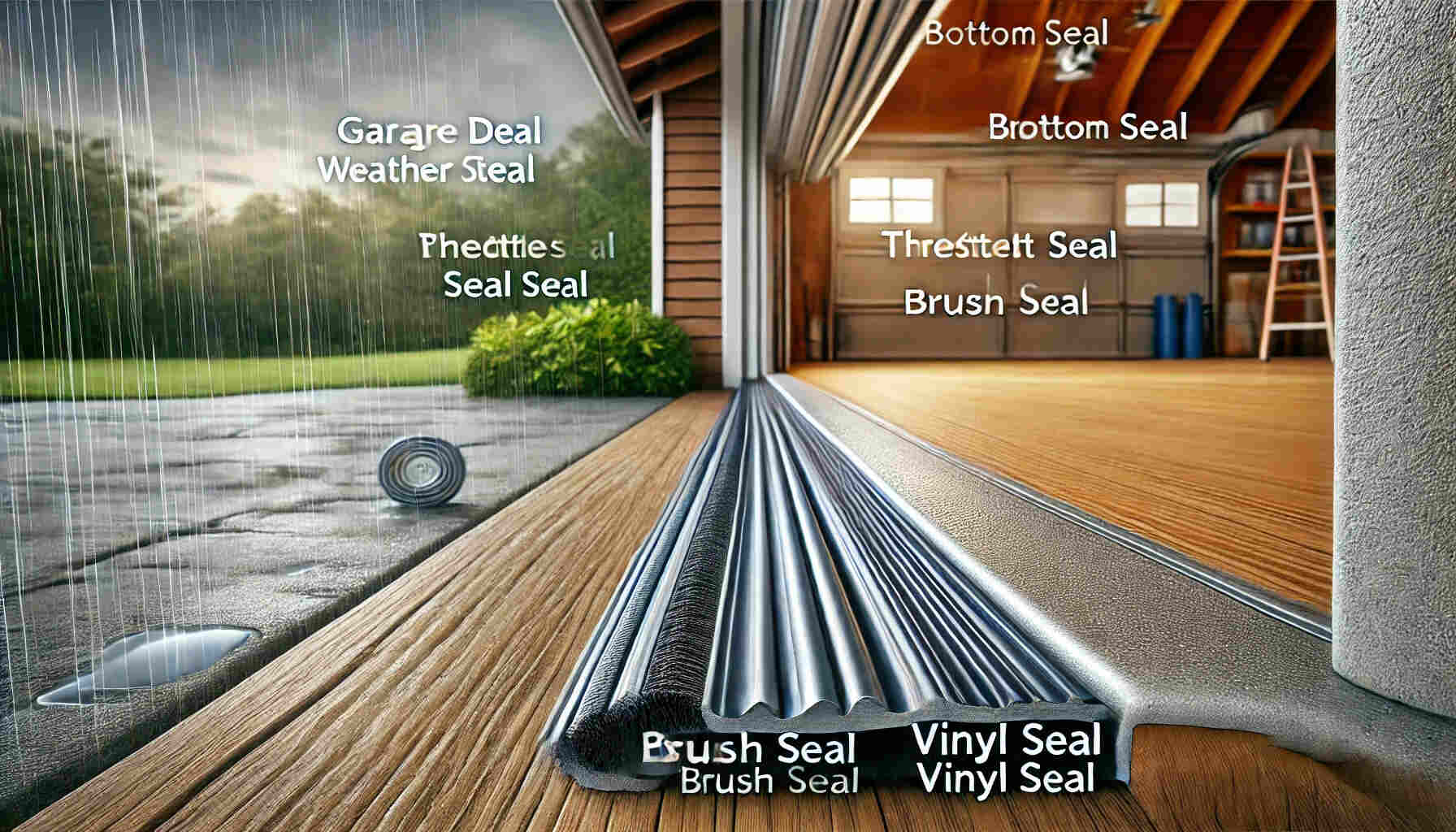Garage door weather stripping to Enhancing Your Garage: is a small but critical component of garage maintenance that ensures the space remains dry, energy-efficient, and comfortable. Whether you use your garage as a workshop, storage area, or simply a place to keep your vehicle, proper sealing can significantly enhance its functionality.
What is Garage Door Weather Stripping?
Weather stripping consists of materials used to seal openings around doors and windows against the outdoor environment. For garage doors, this stripping seals the gap between the door and the frame, preventing elements like wind, rain, and snow from entering, as well as keeping out pests and dust.
Benefits of Weather Stripping Your Garage Door
Energy Efficiency:. Sealing gaps with weather stripping can prevent air leaks, which means you will require less energy to heat or cool your garage. This is particularly beneficial if your garage attaches to your home, as fluctuations in temperature can affect your home’s overall climate.
Protection from Elements: Weather stripping keeps moisture and water out, reducing the risk of water damage to the walls and items stored in the garage. It helps prevent mold and mildew growth, which are common in damp areas.
Increased Comfort:. For those who spend a lot of time in their garage, whether for hobbies or as a workspace, weather stripping makes the area more comfortable. By maintaining a more consistent temperature and keeping drafts at bay.
Pest Deterrence: Small gaps may invite pests such as insects and rodents into your garage. Sealing these openings with weather stripping can help to keep these uninvited guests out.
Preservation of Materials:. By controlling the internal environment of the garage, weather stripping helps in preserving items stored there, such as tools. Bicycles, and vehicles, from extreme temperatures and humidity.
Types of Garage Door Weather Stripping
Bottom Seal: The most common type of weather stripping, it seals the gap between the garage door and the floor. It’s usually made of rubber or vinyl and can conform to uneven surfaces, providing a tight seal.
Threshold Seal:. This type is installed on the garage floor rather than on the door. It provides a raised barrier that ensures a better seal when the door is closed. Offering an additional layer of protection against water.
Brush Seal: . Often used on the sides and top of the garage door. Brush seals consist of thousands of bristles that allow for movement but block air leaks. They are particularly effective at keeping out dust and pests.
Vinyl Seal: Vinyl seals are flexible and durable, used around the top and sides of the garage door. They work well in various weather conditions, providing a reliable seal year-round.
Installing Weather Stripping
Installing weather stripping is a straightforward DIY project that can have immediate benefits. You’ll need to measure your garage door to purchase the correct length of stripping. Most types come with adhesive backing or require simple hardware for installation. Cleaning the area thoroughly before applying the new stripping ensures a strong, long-lasting seal.
Conclusion
Garage door weather stripping is an easy upgrade that delivers significant benefits. It protects your garage and its contents from the elements, improves energy efficiency, and enhances overall comfort. By selecting the right type of stripping,. Ensuring proper installation, you can maintain your garage in top condition, making it a more useful and enjoyable space in your home.

